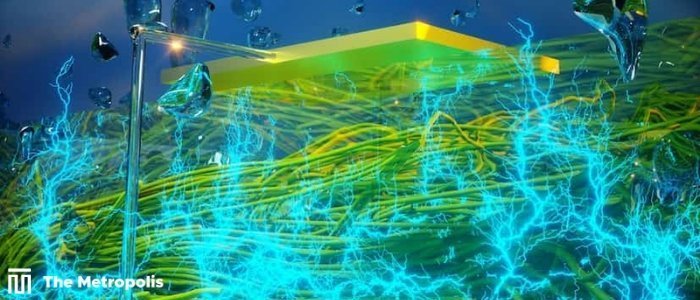Photo: Physics World-
Metropolis Desk-
Yao and his coworkers detailed how a bacterium can create tiny protein nanowires that can generate electricity from the air in a scholarly publication that was published in 2020. Although the precise mechanism is still being debated, the substance’s minute pores seem to have the ability to capture dangling water molecules. The water molecules appear to charge the substance as well as rub against it.
According to Yao, in such a system, the majority of molecules acquire a lot of electric charge around the surface while some others go deeper. As a result, the material layer’s upper and bottom portions have different charges.
Charge separation will become apparent eventually, according to Yao. “In the cloud, that is exactly what takes place.” Storm clouds also produce opposing electric charges that eventually disperse as lightning on a far greater and more dramatic scale.
This implies that electricity can be produced by modifying the motion of water molecules and establishing precisely the proper circumstances for charge separation. Yao claims that this technology can function in almost any place on Earth.
That 2020 paper proved to be the tip of the iceberg.
Yao and colleagues published a follow-up study in May 2023 where they built the same structure, filled with nanopores, but using different materials – from graphene oxide fragments and polymers to cellulose nanofibres derived from wood. Despite some minor differences, they all worked. This shows that it is the structure that matters rather than the content.
A fraction of a volt of electricity has so far been produced by devices that are thinner than human hair. Yao contends that useful charges of several volts and above can be obtained simply by producing more of the material or joining sections of it together. They propose that it might also be created from a liquid that could be sprayed onto surfaces to offer a quick source of energy.
Reshma Rao, a materials engineer at Imperial College London in the UK who was not involved in the study, said, “I think it’s really exciting.” The kinds of materials you can utilize are really flexible.
Rao cautions that it might not be feasible to see such technology powering huge structures or energy-guzzling machinery like autos. It’s possible that the humidity is exactly right for Internet-of-Things gadgets like sensors or tiny wearable electronics.
Source- BBC



